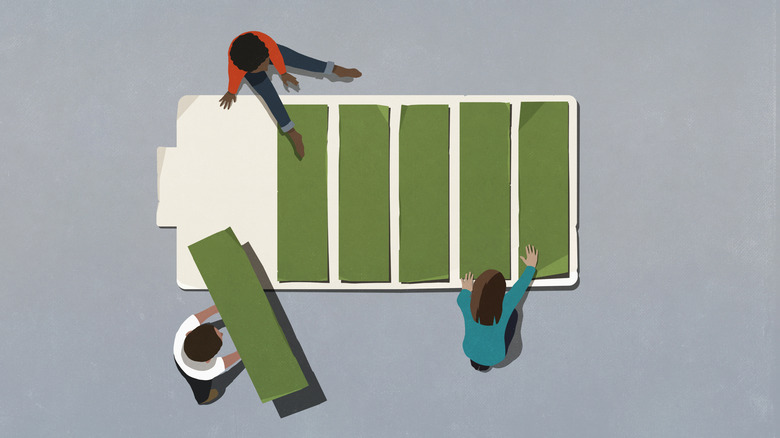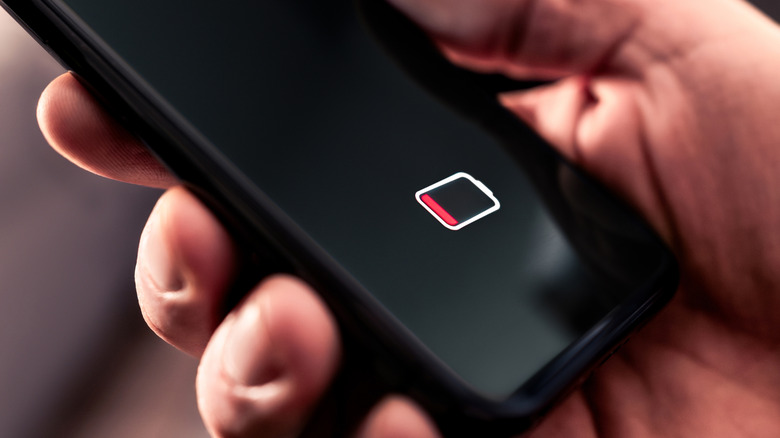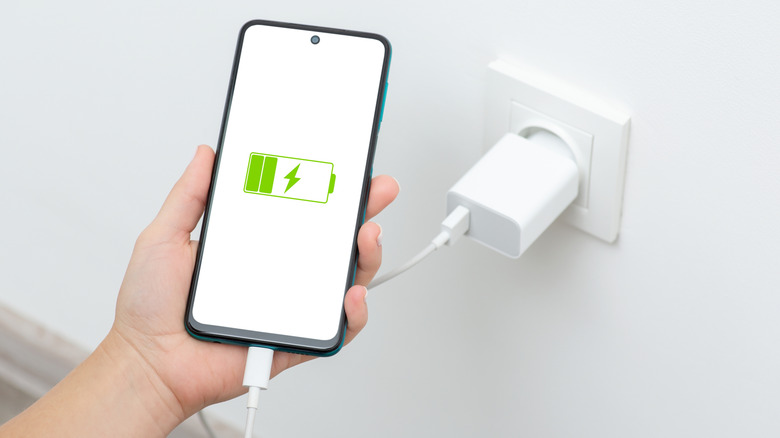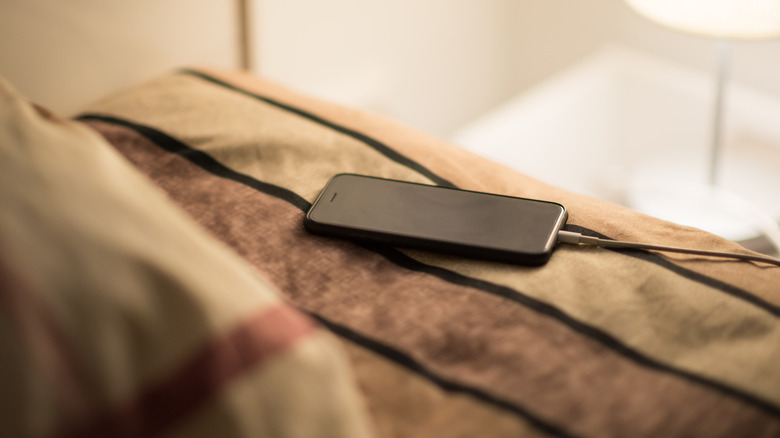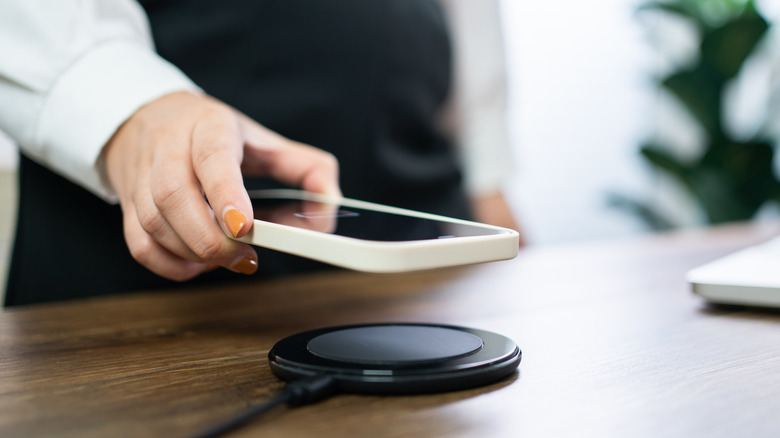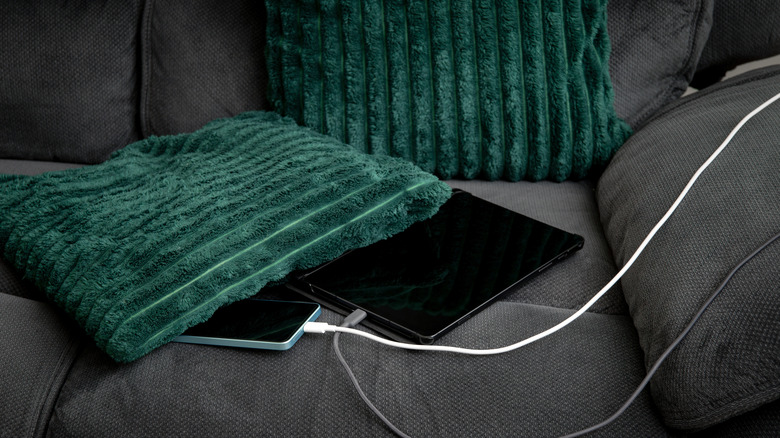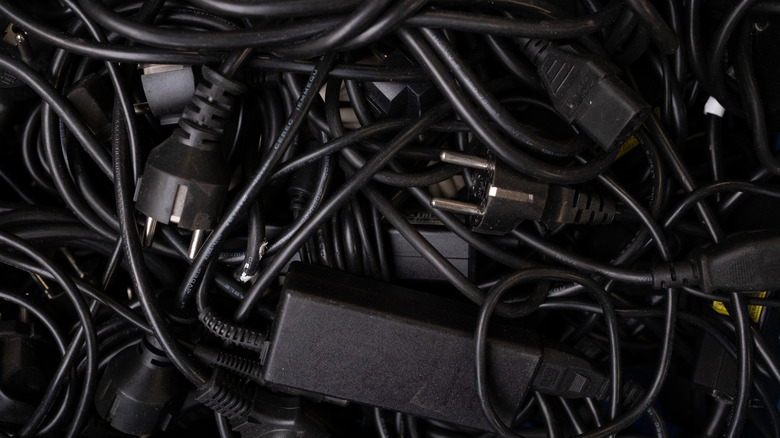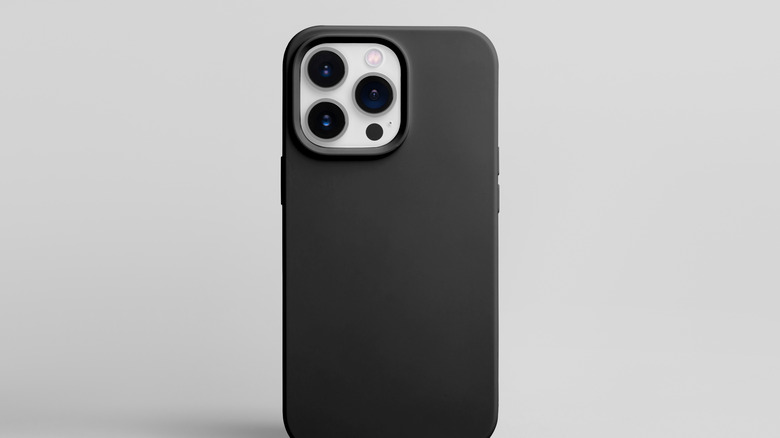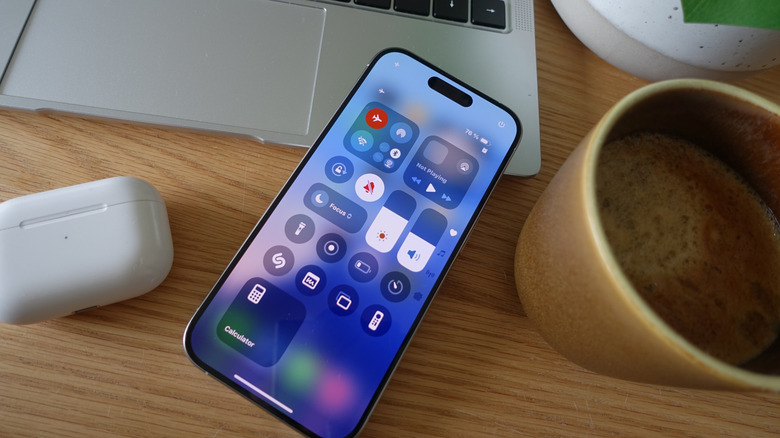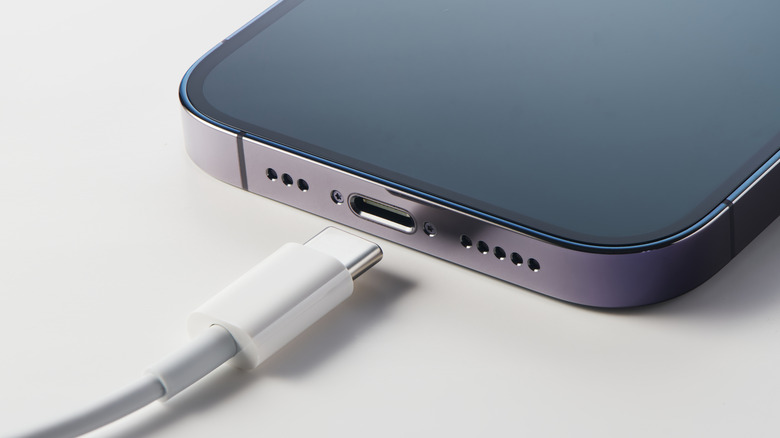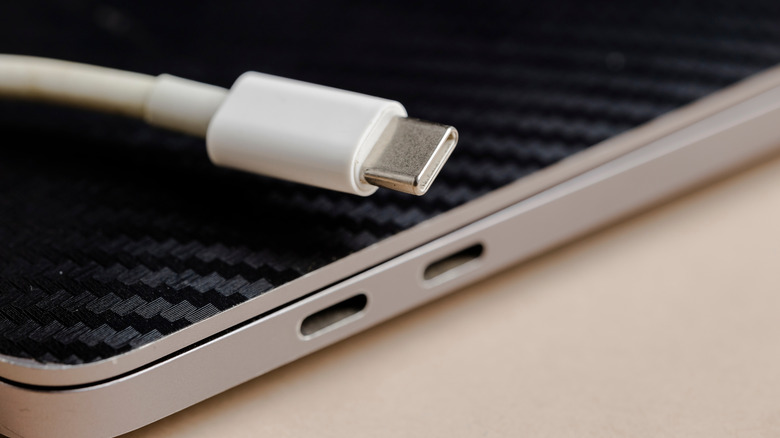Ditch These Bad Habits When Charging Your Devices
If you haven't purchased that phone, computer, or game console you've been eyeing, now might be a good time. Apple is "considering" hiking iPhone prices, as is Samsung. Laptop maker Asus has already raised its prices — and looks set to continue — while its competitors Dell and Lenovo probably will soon, too. PlayStation has increased the price of the PS5 in several regions — though this hasn't yet affected the PS5 Pro — while Xbox has done the same worldwide. The Switch 2, with all its new features and tech, isn't even out yet, and we're already looking at a $450 console versus the $300 original. In the face of such massive price increases, many people will want to hold onto the devices they already own for as long as possible. If that's you, keeping the device's lithium-ion battery in optimal shape will be the key to its longevity.
Many top electronics brands have pitiful repairability scores, so replacing that battery when it loses capacity could be difficult — and there's already so much battery e-waste that there's little justifiable reason to put more chemical crap into landfills if you don't have to. Instead, there are a number of simple things you can change about how and when you charge your devices that will make batteries last longer. These tips apply to virtually any consumer electronic device that uses lithium-ion batteries. Avoid doing the following, and you'll see your device's lifespan extended by months — or, in some cases, years.
Draining your battery to zero then charging to full
There are two things lithium-ion batteries hate more than anything else: being charged to 100%, and being discharged all the way down to zero. Charging a device above 80% subjects it to a higher voltage, which wears out the cells significantly faster. On the opposite end of the spectrum, a battery undergoes chemical breakdown that reduces its long-term capacity when it drops below about 20%. So, ideally, you should keep a device between 20% and 80% battery, or 40% and 80%, if you're really dedicated. Luckily, many devices (including iOS and Android models) have built-in charge-limiting settings.
So, how much longer will a device's battery last if you stick to this rule? It depends on the device and how often you use it, but you could be looking at an extra year or more before needing a battery replacement. Speaking from anecdotal experience, I've seen my devices last significantly longer than those of my friends by adhering to this rule. A device that only gets charged once every few weeks, like the Kindle Paperwhite with all its fun tips and tricks, could see even better longevity.
Of course, we'd be remiss not to acknowledge the elephant in the room: You'd be forfeiting almost half your battery by doing this. Observing the 20-80 rule requires charging devices (particularly smartphones) twice as often, which might not be feasible or tolerable for a busy lifestyle. You'd have to carry one of the major power bank brands or find an outlet everywhere you go. In that case, keeping your battery between 10% and 90% is still better than nothing. But if you work from home or sit in an office all day, going 20-80 is a very minor inconvenience.
Keeping your battery always in the 20-80 range
Ironically, the next bad habit you should avoid is rigidly staying in that 20-80% range. Why? Two words: battery calibration. One of the major benefits lithium-ion batteries have over previous compositions is a lack of battery memory, but they still require calibration to stay on top of their total actual capacity as the battery degrades. That means the battery occasionally requires a full charge and discharge for the internal management system to accurately measure its capacity, according to iFixit. A battery that remains between 20% and 80% for too long could end up dying sooner or lasting longer than the percentage suggests.
So, occasionally, you need to perform a battery calibration. To do this, iFixit recommends charging the device to full and leaving it on the charger for an extra two hours, then draining it completely until it dies, and finally charging it to full again. You should also do this after replacing a device's battery.
How often is battery calibration necessary? Expert opinions vary. Some say you shouldn't bother unless you run into issues. Others say you should calibrate a new device and do it periodically as the device ages. Our recommendation: Occasionally let your battery fall below 20%, then charge it to full, so the battery management system gets a more accurate picture of your battery's capacity.
Leaving your devices charging overnight (without battery optimization enabled)
As we've mentioned, batteries degrade faster when subjected to high voltages near 100% charge, especially for long periods of time. You may remember all sorts of articles not too long ago chastising people for leaving their phones charging overnight. That's no longer really an issue if your phone (or other device) has battery optimization enabled. iPhones, for instance, charge to 80% and then wait — having learned from your daily charging habits — before topping off to 100%. In the case of overnight charging, they finish charging right before you usually wake up. If you enable the 80% charge limiter setting we mentioned earlier, then overnight charging ceases to be a problem at all. Optimizations and limiters are available on many laptop models, too.
However, the situation may be different for devices that don't have these features. The original Nintendo Switch, for example, lacks charge-limiting settings (though the Switch 2 includes them). The same goes for handheld gaming devices like the Steam Deck OLED — which will be adding the feature soon. Smaller devices like Bluetooth headphones and controllers are even less likely to support these features. So, generally speaking, we recommend not leaving your battery-powered devices charging overnight to play it safe.
Using wireless chargers incorrectly
Wireless charging is a technology that not too long ago would've seemed like something out of sci-fi, but now it's becoming standard even on budget smartphones. As cool as it is, though, it produces a lot more heat compared to cable charging, and the more heat there is, the faster a battery wears down over time. By that logic, wireless charging would be more detrimental to your battery's longevity, right? Not necessarily.
The technology behind wireless charging has improved quite a bit over the years. Smartphone manufacturers now make a variety of mechanical and software tweaks to minimize and manage heat buildup. We're not suggesting you avoid wireless charging, just that you use it correctly.
Above all, you need to closely align your phone's charging coil with the wireless charger. Misalignment produces more heat, which, as we've learned, degrades the battery faster. Apple's MagSafe and Android's Qi2 wireless chargers use magnets to get perfect alignment every time, so consider upgrading to a device that supports those standards. Avoid leaving your phone on a wireless charger for long periods or overnight. And in case it wasn't obvious, minimize heat any way you can. You should avoid wireless charging if you're not in a cool, ventilated space — just don't do it outside in the summer.
Charging your devices in extremely hot (or cold) places
Wireless charging won't be the only thing overheating your battery and causing permanent damage. Leaving your device to charge where it has no way to remove that excess heat, such as under a pillow in bed, can be even more damaging. Same goes for charging your device in direct sunlight or inside a hot car. These situations can cause your device to climb above 95 degrees Fahrenheit (or 35 degrees Celsius), which, according to Apple, can inflict permanent damage. As much as possible, charge your devices in cool areas with good ventilation.
Batteries hate heat, that we've well established, but they also don't do well in the cold. Fortunately, the effects of cold weather are mostly temporary; batteries have less capacity and output when the temperature drops, but performance returns once the device is brought back to normal operating temperatures. There are, however, situations where cold weather can permanently damage a charging device, particularly in sub-freezing conditions. At these teeth-chattering lows, your device's battery may develop lithium plating, which is irreversible. Treat your devices like Goldilocks: not too hot, not too cold.
Using sketchy chargers and cables
In addition to all the improvements we've mentioned thus far, devices have gotten really good at safely being charged from unfamiliar sources, such as third-party power bricks and cables. You no longer have to worry about buying an expensive proprietary charging brick to know that your device isn't being damaged ... but you should still exercise some caution. There are trustworthy cord and charger brands, and then there are cheap chargers and cables, especially those that come from all-caps random brands. They often lack built-in power management safety features and may not be held accountable for lapses in regulatory adherence — which means you'd have little recourse if they ruin your device.
While it's difficult these days for a cheap charger or cable to make your device go nuclear from overcharging or short-circuiting, damage can occur in a more roundabout way. If the charger or cable itself fails catastrophically, particularly if it catches fire or melts, then that could damage your much more expensive device. At the end of the day, you get what you pay for. Use the proprietary charger, or shell out a bit extra for a more expensive smartphone charger to make a difference.
Having a really thick case (during charging)
Cases (particularly for phones) may seem like a completely arbitrary choice that has no bearing on your phone's charging. Not so. Since the vast majority of phones don't use fans, they dissipate heat through the body of the phone — heat a case can trap. Studies have proven as much, but you don't need a PhD in thermodynamics to know that sealing a hot object in a thick layer of material causes some of that heat to get trapped, especially if the material (like plastic) doesn't dissipate heat as well as a metallic phone body. For confirmation from a smartphone manufacturer, Apple recommends removing certain cases when charging your iPhone.
So, do you need to take off a thicker case when your phone is charging? It depends, of course, on the case, the phone, the ambient temperature, what you're doing on your phone while it's charging, and so on. Barring using an infrared thermal imager to check whether your phone goes above that danger-zone 95-degree threshold, use common sense. Does your phone feel uncomfortably hot while it's charging? Remove the case and see if it gets significantly cooler. If the case proves to be the problem and is easy to remove, then you might want to take it off every time you charge. The same applies to some other devices; laptop cases may cause overheating, for example.
Using your device too heavily while charging
Do you really need to avoid using your phone while it's charging? Not necessarily, and the same applies to other devices. As we've belabored already, battery management software is incredibly smart these days, making behind-the-scenes adjustments to keep the device cool regardless of the situation. So don't stress about browsing social media or messaging your friends while topping up. If you couldn't safely use your smartphone while charging it, the manufacturer would make your device inoperable the second you plugged it in. Heat from charging and using the device at the same time is negligible — if we're talking about simple, everyday tasks — but when you're really pushing your device, maybe wait until it finishes.
By "pushing," we mean the heavy-duty stuff like intensive multitasking, recording high-definition video, video editing, or gaming. Other devices designed for demanding tasks (like laptops and handheld game consoles) should also be treated accordingly. Using the Steam Deck as an example, it's advisable not to play a demanding AAA game while charging — although you'd probably be fine if your Deck is docked and the battery is already charged. Whatever the case, do what you can to limit how hot your devices get — on the charger or off it.
Leaving Wi-Fi and Bluetooth on
You may have heard somewhere that turning on airplane mode while charging your device makes it charge faster. This is true, at least according to a test performed by CNET. Charging a phone with airplane mode enabled sped things up by as much as 11 minutes. Connectivity like Wi-Fi and Bluetooth use a fair amount of energy, consequently making charging take longer. While this test was conducted in 2014 (smartphones' "adolescence," technologically speaking, so they were less efficient), and more tests would be needed to corroborate the results, it logically follows that disabling power-draining connectivity settings speeds up the charging process — and may also reduce the heat generated during charging, even if only by a tiny amount.
Suppose, for example, you need to hit the road in half an hour but your phone is almost dead and you don't have a fast charger. Enable airplane mode before you plug it in, and you might get a nice extra chunk of battery percentage. There are even some iPhone shortcuts that shut off a bunch of power-hungry settings to help your iPhone charge faster, like Fast Charge Mode, which disables connectivity, drops screen brightness, and enables Low Power Mode with a single button press. You could even set up an iPhone automation that does this every time you plug into the charger and then disables itself when you unplug. That said, disabling these settings is probably not something you want to do every time you charge. This tip is really only for the rare situations where getting a lot of battery, quickly, is of the essence.
Avoiding fast charging
Fast charging has drawn skepticism since many people rightly suspect that to charge faster, devices inevitably produce a lot more heat — and this is true — but the big question is how that heat is managed, and whether it's degrading a device's battery significantly more than normal charging. Most modern devices (particularly fanless phones) have improved their heat dissipation strategies massively compared to smartphones from the 2010s. Advancements like graphite padding, copper vapor chambers, integrated circuit power bricks, multi-cell batteries with parallel charging, and more mean that the extra heat generated during fast charging can be effectively removed from the device without being much cause for concern.
The evidence so far suggests that fast charging doesn't meaningfully degrade batteries any more quickly than "slow" charging does, but there are still a few things to keep in mind if you use a device's fast-charging features. First, stick with proprietary cables and bricks (or charging pads) since manufacturers optimize their devices to work best with them. You'll probably be fine with a high-quality charging brick from a reputable company like Anker, but things can get tricky when trying to figure out how much power a USB port with Power Delivery can output.
Second, just because your device has all those fancy vapor chambers and integrated circuits doesn't mean you should ignore the same precautions we outlined earlier. Charge it in a cool place. Since more heat is being produced compared to "slow" charging, it's advisable not to use the device much until it finishes. To be clear, this applies not just to phones, but to tablets, laptops, and anything else with fast-charging capabilities.
Leaving laptops plugged in at 100% battery
You've probably heard it's a bad idea to leave your laptop plugged in when the battery is fully charged, especially if you're working on it all day. On the face of it, this might seem like an old myth that was true a decade ago; most modern laptops (and any device meant to be used plugged in) are smart enough to bypass their battery once it's fully charged and draw power directly from the wall adapter. Having said that, you may also remember that one of the reasons why it's ideal to keep your battery below the 80% threshold is because high voltage wears down batteries much faster. Plus, trickle charging creates repeated bursts of heat. So it's still a bad idea to leave a battery plugged in all day — but only if you leave it plugged in at 100%.
The secret here is the same thing you do with a smartphone: Limit charging to 80%. On Windows 10 and 11, most manufacturers offer a built-in battery limiter function accessible through customization software or the BIOS. macOS does this automatically with optimized battery charging, although it learns from how you use your laptop and when you take it off the charger to decide when to limit charging.
If you want complete control on macOS, try a program like Al Dente, one of the best Mac apps to improve your Apple experience. Even with charge limiting, though, it's a good idea to occasionally unplug your computer and let it drain down to 20% before charging again. This avoids the risk of battery swelling, which might turn your laptop into a lithium-ion time bomb.
